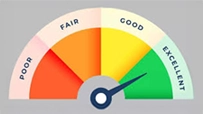Income-Tax (No. 2) Bill, 2025: What the New “SIMPLE” Law Means for Taxpayers
Disclaimer: This article is generic in nature. Ujjivan SFB does not offer any personal finance products and/or services.
September 03, 2025

On August 11, 2025, the Lok Sabha approved the Income‑Tax (No. 2) Bill, 2025, setting in motion the most sweeping overhaul of India’s direct tax law in more than six decades.
Unlike incremental tweaks, this bill discards the old rulebook entirely, streamlining the Income-tax Act, 1961, from approximately 819 sections to 536, and reducing chapters from 47 to 23—creating a much leaner, digitally aligned framework.
What follows explains why the 1961 framework had become unwieldy, and how the new bill attempts to correct those structural problems while preparing the system for a digital economy.
Why the 1961 Act Needed a Complete Rewrite
When it was enacted in 1961, the Income-tax Act was built for a different economy. In those days, the scope of taxable transactions was narrower, compliance was largely manual, and disputes were handled through face-to-face interactions with tax officers.
Over the decades, however, the law evolved into something far more unwieldy.
In short, the 1961 law had become a patchwork, functional but friction‑heavy. The new bill responds with a cleaner structure and clearer drafting to lower the day‑to‑day burden on taxpayers and administrators alike.
The SIMPLE Framework: Principles Behind the Rewrite
The SIMPLE framework is a structural foundation of the new law, intended to guide interpretation, administration, and future amendments.
Together, these six pillars aim to translate policy intent into everyday ease, shorter reading paths, fewer disputes, and technology‑enabled administration that meets today’s pace.
Major Changes Introduced
The bill is not just a cleaner rewrite of the old law. It also introduces substantive structural, procedural, and conceptual changes. These adjustments are designed to address long-standing bottlenecks while preparing the Indian tax system for future demands.
These changes combine structural streamlining with procedural safeguards, aiming to make compliance easier while protecting taxpayer rights.
Benefits Across Taxpayer Segments
By tailoring changes to different taxpayer profiles, the bill aims to distribute compliance benefits widely, from individuals to complex enterprises. Let’s get a closer look at it:
Yet, even with these benefits, the transition from an entrenched legal framework to a brand-new code will present challenges that taxpayers and administrators must be ready for.
Before vs After — Key Differences and Implications
This comparison illustrates not just a change in volume and terminology, but a rethinking of structure and safeguards.
| Aspect | Income-Tax Act, 1961 | Income-Tax (No. 2) Bill, 2025 | Implication |
| Volume of Law | 800+ sections | 536 sections | Shorter, easier to navigate. Reduces compliance time. |
| Organisation | Scattered provisions, frequent cross-referencing | 23 chapters, 16 schedules | Logical grouping of related provisions improves readability. |
| Terminology | Assessment Year | Tax Year | Easier to understand for new taxpayers. |
| Refund Rules | Strict deadlines; missed ITR meant forfeiting the refund | Refunds allowed post-deadline without penalties | Reduces financial loss from procedural delays. |
| Administration | Partial faceless processing | Fully digital-first & faceless | Transparency and reduced physical interface. |
| Enforcement | No uniform notice protocol before action | Mandatory notices before enforcement | Safeguards against arbitrary action. |
Final Thoughts
Replacing a law that has been in place for over six decades is both a bold move and a high-stakes gamble. The Income-Tax (No. 2) Bill, 2025, is ambitious in its goals: making tax law simpler, clearer, and more responsive to modern economic realities.
If implemented well, this reform could serve as a blueprint for future legal overhauls in other sectors. If mishandled, it could create new forms of complexity that undo its intended benefits.
Disclaimer:
The contents herein are only for informational purposes and generic in nature. The content does not amount to an offer, invitation or solicitation of any kind to buy or sell, and are not intended to create any legal rights or obligations. This information is subject to updation, completion, amendment and verification without notice. The contents herein are also subject to other product-specific terms and conditions, as well as any applicable third-party terms and conditions, for which Ujjivan Small Finance Bank assumes no responsibility or liability.
Nothing contained herein is intended to constitute financial, investment, legal, tax, or any other professional advice or opinion. Please obtain professional advice before making investment or any other decisions. Any investment decisions that may be made by the you shall be at your own sole discretion, independent analysis and evaluation of the risks involved. The use of any information set out in this document is entirely at the user’s own risk. Ujjivan Small Finance Bank Limited makes no representation or warranty, express or implied, as to the accuracy and completeness for any information herein. The Bank disclaims any and all liability for any loss or damage (direct, indirect, consequential, or otherwise) incurred by you due to use of or due to investment, product application decisions made by you on the basis of the contents herein. While the information is prepared in good faith from sources deemed reliable (including public sources), the Bank disclaims any liability with respect to accuracy of information or any error or omission or any loss or damage incurred by anyone in reliance on the contents herein, in any manner whatsoever.
To know more about Ujjivan Small Finance Bank Products Visit:"https://www.ujjivansfb.in"
All intellectual property rights, including copyrights, trademarks, and other proprietary rights, pertaining to the content and materials displayed herein, belong
to Ujjivan Small Finance Bank Limited or its licensors. Unauthorised use or misuse of any intellectual property, or other content displayed herein is strictly prohibited and the same is not intended for distribution to, or use by, any person in any jurisdiction where such distribution or use would (by reason of that person’s nationality, residence or otherwise) be contrary to law or registration or would subject Ujjivan Small Finance Bank Limited or its affiliates to any licensing or registration requirements.
FAQs
1. Why replace the 1961 Act instead of amending it again?
Its accumulated complexity made further amendments impractical.
2. How will ongoing disputes be handled?
CBDT transitional guidelines will define the approach.
3. Can I get a refund if I miss the filing deadline?
Yes, post‑deadline refund claims will be permitted without penalties.
4. What is the 'Tax Year'?
It’s the period in which you earn and report income, replacing 'Assessment Year' for clarity.
Latest Blogs

APK Fraud: How One Wrong Download Could Empty Your Bank Account
May 13, 2025
Picture this. You’re sipping your evening tea when your phone rings.

Gold Loan LTV Ratio Explained (75% to 85%): What It Means for Borrowers
March 20, 2025
In June 2025, the Reserve Bank of India (RBI) introduced a significant relaxation for gold loan borrowers: the maximum Loan-to-Value (LTV) ratio for loans below ₹2.5 lakh was raised to 85%, up from the long-standing cap of 75%. Loans between ₹2.5 lakh and ₹5 lakh can now go up to 80%, while loans above ₹5 lakh continue under the 75% ceiling.

Good Debt vs Bad Debt: Learn the Difference
August 13, 2025
Every month, millions of Indians wait for the familiar debit alert, an EMI deducted from their account.

Got a Tax Refund? 5 Smart Ways to Put Your 2025 Refund to Work
August 13, 2025
For many taxpayers, there’s a unique sense of relief when a tax refund arrives.

Credit Score Not Improving? 5 Mistakes You Might Be Making
August 13, 2025
For most of us, a credit score feels like a silent judge sitting in the background of our financial lives.


